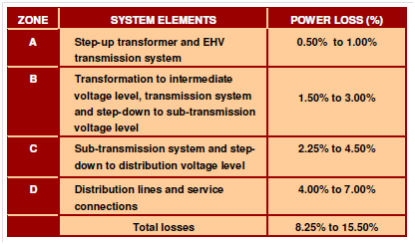How to Measure and Separate the Technical and Commercial Losses
The separation of commercial loss from the total technical and commercial loss includes comparison of the losses as measured through 'Energy Accounting' along with the losses as estimated through network simulation studies. For an 11 kV feeder, the procedure could be outlined as follows:
1. Undertake energy accounting for the particular 11 kV feeder. The difference of energy input measured at feeder end and the recorded consumption is the total loss:
Total loss = (Energy input measured at feeder end) - (Recorded consumption)
2. Using modern distribution system analysis software, carry out a simulation study for the load flow for different loading conditions during the Energy Accounting period.
3. The difference of total loss and the loss obtained from simulation studies (technical loss) is an indication of the non-technical loss in each distribution feeder:
Non-technical loss = Total loss - Loss obtained from simulation studies (technical loss)
This accounting and analysis would enable segregation of technical and non- technical losses within the system and help in drawing up strategies for achieving results on both the fronts. It is also necessary to identify network elements along with high technical losses.

Estimation of losses in LT network might be completed initially for a sample network emanating from representative distribution transformers covering various categories of consumers and load density. With full computerization of the database, it would be feasible to cover the overall LT system as per required.
After going by here, it must have become amply clear to you in whom proper 'Energy Accounting' is a must for identifying the technical and commercial losses, separating them and also identifying the 'culprit' feeder.
We now discuss special cases and the precautions needed in taking energy measurements.